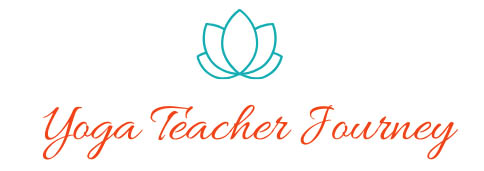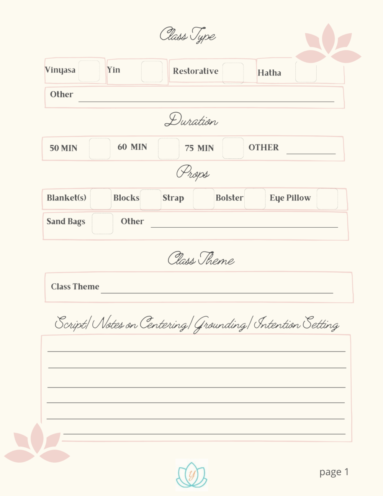And Where To Go From There
Do you always start teaching your class in the same predictable posture? As students arrive, do they automatically get into that shape? Here are 9 postures that may help get the creative juices flowing to make a more interesting – and effective beginning to your next yoga class!
The following list is in alphabetical order, not by order of preference or effectiveness.
AGNISTAMBHASANA (Fire Log Pose)
Starting in Fire Log Pose is not for everyone and is probably best suited for a Yin or beyond a level one Vinyasa class. In this posture, students are going into a deep hip opener right from the start. It may require the use of modifications and props for less flexible yogis – or for those with tight hips or knee issues.
The good news is there are modifications that can make this pose accessible, such as using a block or blanket to support the top knee. If someone finds it too uncomfortable, simply offer the option of Sukhasana or another comfortable seated hip opening position, such as Baddha Konasana.
Allowing students to relax into Fire Log during grounding and centering, permits gravity to assist their bodies to gently ease into the posture. Fire Log Pose is excellent preparation for hip openers such as Eka Pada Rajakapotasana (Half Pigeon Pose). Be sure to switch the cross of the legs to do both sides.

BALASANA (Child’s Pose)
Beginning a class in Child’s Pose offers many grounding benefits. You might choose to cue students into a wide-legged Balasana, (big toes together, knees to edges of the mat) to allow their belly to rest between the hips, the hips to gradually open, while drawing the heart closer to the mat and the earth. Students can use a block to gently rest their forehead if it doesn’t reach the mat.
In this pose, students are closed-off to the rest of the world, allowing them to draw their awareness deeply inside.
While in this starting posture, I like to cue students to notice their ribs expanding and contracting with each breath. Cue them to begin to notice their feet, shins, and knees touching the mat and the earth supporting them from below. You might choose to work up the body from there, and to allow their heart to sink closer to the earth with each exhale. Continue cueing to notice the arms and hands, and end with the forehead, cueing to gently rock the forehead side to side.
From here begin cueing to lift the hips and rise to Bharmanasana (Table Top Pose) and proceed with Marjaryasana/Bitilasana (Cat/Cow) and other warm-ups, or maybe directly to Adho Mukha Svanasana (Downward Facing Dog) warming-up with Surya Namaskars (Sun Salutations).
GOMUKASANA LEGS (Cow Face Posture Legs or Shoelace in Yin)
Gomukasana can be practiced with the legs only or in the full expression of the posture with arms as well. As a starting posture however, asking students to hold Cowface arms through grounding, centering and Pranayama, is a bit much in my opinion.
Beginning with Gomukasana legs with hands resting down by their side and transitioning to include Gomukasana arms next is a much nicer option.
My favorite transition is to move into a seated twist from here. From the twist, ask students to keep the front hand on the top knee, then to cross the back arm over as they come back to center. Next have them bend the elbows and wrap the arms into Garudasana arms (Eagle arms) or alternatively take a hug if arms don’t wrap.
This posture is great preparation for full Garudasana (Eagle Pose) with hips in flexion and external rotation. If student’s knees don’t stack in this posture, the bottom leg can remain extended (half Shoelace).
PRONE SAVASANA (Belly Down Corpse Pose)
Just like beginning in Balasana, this posture offers the added benefits of physically closing off from the outside world, assisting students with grounding, centering, and drawing their awareness inside. Starting in Prone Savasana, with the forehead resting on the back of stacked hands initiates a very subtle backbend. While practicing Pranayama here, students can follow the breath as it moves up and down the back of the body.
You might choose to begin here if you plan to peak to a deeper back bending posture, or if energizing backbends are your focus for the class. From this prone position, you could cue students to lift one leg and then the other and then move into a gentle Bujanghasana (Cobra Pose). Or, they can slide hands under shoulders and press up to Bharmanasana (Table Top Pose) and continue with warm-ups like Marjaryasana/Bitilasana (Cat/Cow) and Dandayamana Bharmanasana (Balancing Table Pose).
SAVASANA (Corpse Pose)
Savasana is a common starting posture for new teachers. If you are at all nervous about a class full of students facing you, starting them in Savasana is a safe option to help reduce stage fright.
I still frequently begin classes with students reclined on their backs. Just as I would cue them in Savasana, I invite them to take any comfortable position with their legs (knees bent or legs extended, support under their knees if they choose to have it).
This is ideal for newer or level one students and is a great place to start students with Dirga Breath (3-part breath) with one hand on their belly and one on their upper chest.
Cactus arms work well here too for a gentle chest and heart opening. Or, they can just allow arms to rest by their side.
From here, you can cue to hug knees to chest and then continue with Supta Ardha Matsyandrasana (Reclined Spinal Twist), or Supta Eka Pada Rajakapatosana (Reclined Pigeon), or simply cue to extend legs and flex and point toes to begin warming up the hamstrings. Cueing into a gentle Salamba Sarvagnasana (Bridge Pose) is also a viable path to take from here. You might follow with Sukasana (Easy Seat) and into a seated warm-up. The possibilities are endless beginning in Savasana – but beware, it can add some length to your class and may be more practical for a longer class.

SUKHASANA (Easy Pose)
Sukhasana is probably the most common posture in which to begin to ground and center your students as they draw their awareness inside. It’s a great place to give instructions for Pranayama which may require a demonstration such as Nadi Shodhana (Alternate Nostril Breathing) or Ujjayi Breath (Victorious Breath), or to demo Mudras (seals or hand gestures).
Starting in an easy seated position, suggest the use of a blanket or block to elevate hips for the ease of tilting the pelvis forward more freely. Students can cross at ankles or shins, or one leg in front of the other. Allowing gravity to assist, this is a gentle hip opener.
In Sukhasana it’s advisable to begin slowly with spinal awareness (grounding sit bones, lengthening the spine, and aligning ribcage over pelvis). Then move to gentle shoulder rolls, neck stretches, arm extensions, gentle forward folds and seated twists.
You can spend a lot of time in seated especially if you’re teaching a gentle class.
SUPTA BADDHA KONASANA (Reclined Bound Angle Pose)
In the category of deep hip openers, this starting posture can be a rather intense stretch in the groin area and the adductor muscles if the correct precautions aren’t taken. Instead of forcing the knees to open widely, consider allowing them to gently rest naturally, or use blocks to support them. If there is discomfort in the knees, move your feet away from your bottom.
I sometimes begin students in this Supta Baddha Konasana using a bolster to support their back to eliminate any low back discomfort. A block can be placed under the bolster at the lowest height or higher if they wish.
A great preparatory pose for many postures (Baddha Konasana, Gomukasana, Malasana), Supta Baddha Konasana can be cued to allow arms to rest slightly away from the sides of the body, or – if not using a bolster – they can lift arms overhead for a feeling of chest and hip opening together. Another great option is to cue Dirga Breath (3-part breath) here, with one hand on their belly and one hand on their chest giving them the ability to connect to the movement of the body with the breath.
To come out of this posture, cue students to use their hands to assist drawing the knees together like closing a book. Having them extend legs and windshield-wiper their feet will act as a counter to this powerful opening.
TADASANA (Mountain Pose) Pose
You may consider beginning your class in this standing posture if your theme is one of high energy or an early morning class where you want students to wake up and get things moving right away!
Cue to align students into Mountain Pose as usual and then to take a downward gaze or close their eyes. Have them begin noticing their feet and legs rooting into the earth to feel grounded. Maybe noticing their balance as they shift weight from left to right, forward, and backwards. Continue with a Pranayama practice as they become centered, grounded, and focused.
Once students open their eyes, maybe get them moving with a Ardha Surya Namaskar A (half Sun Salutation) before moving along to a full Surya Namaskar A and beyond.
VIRASANA (Hero Pose)
If you’d like to “veer” (get it?) from your normal routine, try starting in Hero Pose! I love to begin here for themes that embrace strength and honor, or during holidays when we reflect on honoring our heroes.
Give options for students with knee issues, to either use a block or folded blanket to sit up on, or to forego this posture and take an easy seated position. Students can also keep knees together, and simply sit back on the heels.
A few good places to move into from here might be shifting forward into Bharmanasana (Table Top) and continuing by extending each leg to stretch out the hamstrings, then taking Marjaryasana/Bitilasana (Cat/Cow), and other warm-ups. Or, to move hips to one side and after countering the pose by extending the legs and windshield wiping the feet, then go through a series of seated warm ups.
As you can see there are plenty of options when it comes to starting postures for your next sequence. Using your creativity and knowledge, you can create a safe and memorable sequence that will keep your students returning for more.
Resources:
Yoga Sequencing by Mark Stephens





